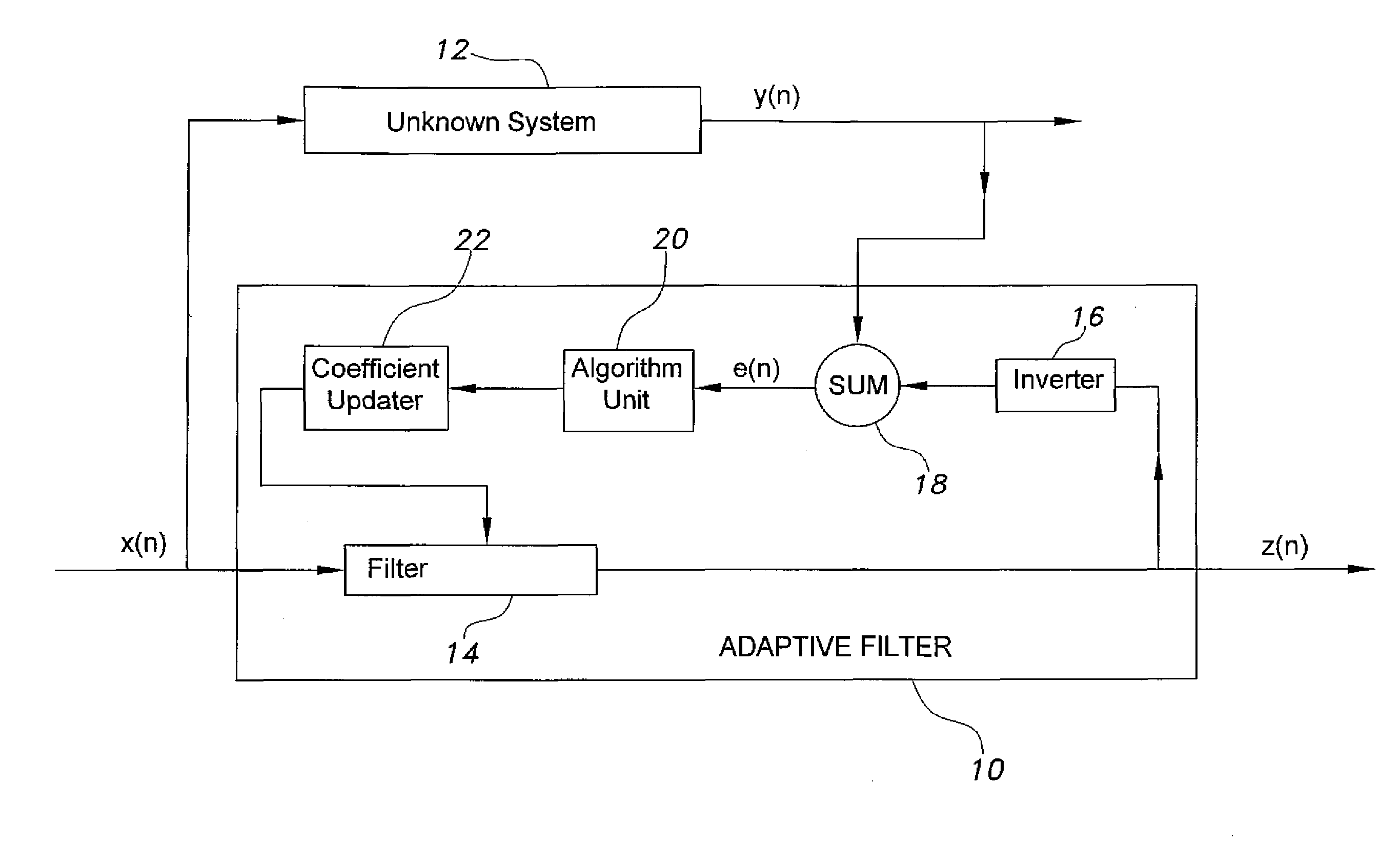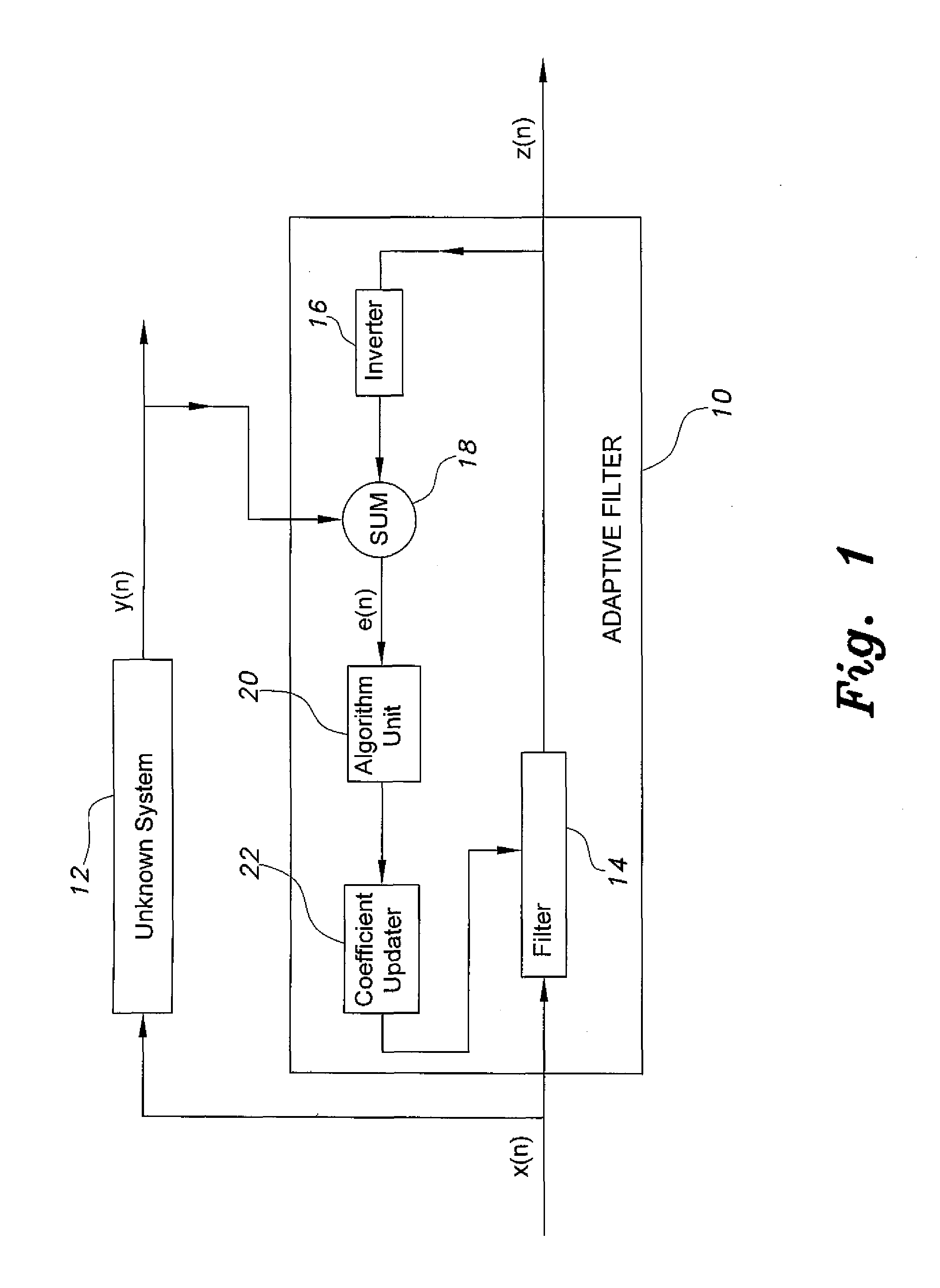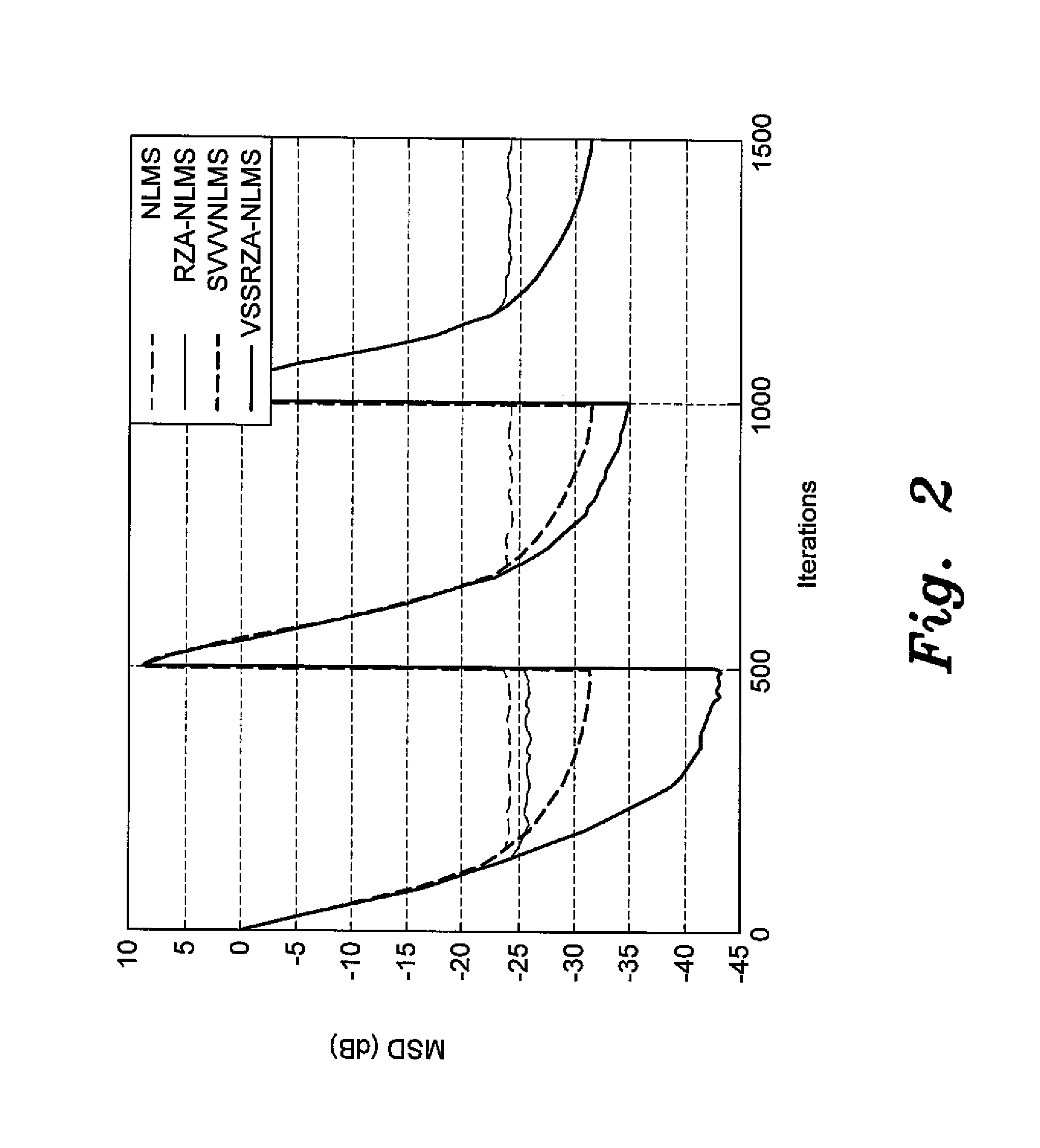Adaptive filter for system identification
a system identification and filter technology, applied in the field of digital signal processing techniques, can solve the problems of large adjustment error and use of a very small value, and achieve the effect of improving performan
- Summary
- Abstract
- Description
- Claims
- Application Information
AI Technical Summary
Benefits of technology
Problems solved by technology
Method used
Image
Examples
second embodiment
where the step size μ is varied according to μ(i+1)=αμ(i)+γ|e(i)|. In a second embodiment, the algorithm is a Reweighted Zero Attracting LMS (RZA-LMS) algorithm in which the filter coefficients are updated at each iteration according to:
w(i+1)=w(i)+μ(i)e(i)uT(i)u(i)2-ρsgn(w(i))1+ɛw(i),
where the step size μ is varied according to μ(i+1)=αμ(i)+γ|e(i)|. The adaptive filter may be implemented on a digital signal processor (DSP), an ASIC, or by FPGAs.
[0018]FIG. 1 shows an exemplary adaptive filter for system identification, designated generally as 10 in the drawing, and how it may be connected to an unknown system 12. It will be understood that the configuration in FIG. 1 is exemplary, and that other configurations are possible. For example, the unknown system 12 may be placed in series at the input of the adaptive filter 10 and the adaptive filter 10 may be configured to produce a response that is the inverse of the unknown system response, the input signal being summed with the adaptiv...
PUM
 Login to View More
Login to View More Abstract
Description
Claims
Application Information
 Login to View More
Login to View More - R&D
- Intellectual Property
- Life Sciences
- Materials
- Tech Scout
- Unparalleled Data Quality
- Higher Quality Content
- 60% Fewer Hallucinations
Browse by: Latest US Patents, China's latest patents, Technical Efficacy Thesaurus, Application Domain, Technology Topic, Popular Technical Reports.
© 2025 PatSnap. All rights reserved.Legal|Privacy policy|Modern Slavery Act Transparency Statement|Sitemap|About US| Contact US: help@patsnap.com



